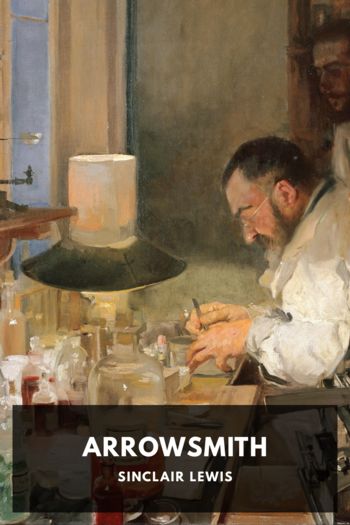Holocaust: The Nazi Persecution and Murder of the Jews, Peter Longerich [essential books to read TXT] 📗

- Author: Peter Longerich
Book online «Holocaust: The Nazi Persecution and Murder of the Jews, Peter Longerich [essential books to read TXT] 📗». Author Peter Longerich
efforts to teach ‘Palestinian studies’.
Jewish welfare organizations attempted to support the Jews, who were increas-
ingly excluded from official services, in a great variety of ways, through food
agencies, services of goods and money, through measures in the field of open social
work, health care, and care for the elderly, etc. 88 In 1937 there were only twenty-one Jewish hospitals, fifteen sanatoria, forty-nine children’s homes and orphanages, and
seventy-six old people’s homes and hospices. 89 One of the most successful projects was a Jewish Winter Aid scheme. Once Jews were excluded from the official Winter
Aid scheme by the Nuremberg Laws, the Reich Board set up a Winter Aid scheme
of its own, under the control of the Reich Commissioner for Winter Aid. It was
financed, on the model of the official Winter Aid scheme, by tax-like donations
drawn directly from wages or other income, and levied throughout the whole six
months of winter. 90 The proportion of the Jewish population who received support from Jewish Winter Aid rose from 20.5 per cent (1935–6) to 24.3 per cent (1938–9). 91
The creation of autonomous Jewish organizations designed to rescue the Jews
excluded from the various social spheres and give them the support they needed
Interim Conclusions
89
to survive also led to the further intensification of the segregation and isolation
of the Jewish minority that had been set in motion by the regime. Further to
this, the formation of purely Jewish organizations in a later phase of Juden-
politik, in which they were turned into the organs of a state-controlled enforced
community, in many ways made it easier for the NS state to record and control
the Jews. It was to prove fatal that Nazi Judenpolitik was able to use the
extensive attempts to achieve Jewish self-organization for the further intensifi-
cation of persecution.
chapter 4
THE INTENSIFICATION OF THE RACIAL
PERSECUTION OF NON-JEWISH GROUPS BY
THE POLICE APPARATUS, 1936–1937
In the first years of the ‘Third Reich’, National Socialist ‘Racial policy’ was defined
above all by two strategies. By the exclusion and segregation of the Jewish minority,
and by the attempt to prevent the reproduction of the so-called erbkrank, or
hereditarily ill. After the mid-1930s further racial policy measures were added, mainly
by the police apparatus and directed specifically against particular groups.
After Himmler took over and reorganized the entire German police force in
1936, over the course of 1937 the Sicherheitspolizei, or ‘security police’, formed by
the merger of the Gestapo and the criminal police (Kripo), intensified the perse-
cution and systematic elimination of marginal groups which were seen as a public
danger because of their supposedly ‘inferior’ hereditary predispositions. In this
way the security police acted as an instrument of ‘racial general prevention’. 1 This policy, which was closely connected to the continuing segregation of the Jews
occurring at the same time, affected four groups in particular: people of non-
European origin or children of Germans and non-Europeans, Gypsies, ‘asocials’,
and homosexuals. The exclusion and persecution of groups stigmatized by their
different ‘racial affiliation’ or supposed ‘hereditary predispositions’ granted the
police extensive opportunities for access and control with regard to the population
Persecution of Non-Jewish Groups by the Police, 1936–7
91
as a whole, whose everyday and social relations were subjected to a dense network
of prohibitions and prescriptions.
During the first few years of the ‘Third Reich’, the criminal police had, under
the watchword of ‘preventive crime-fighting’, attempted through the use of
preventive detention, preventive custody, and surveillance measures, systematic-
ally to eliminate so-called ‘professional criminals’. After the formation of the
Reich Criminal Police Office in July 1937 and the centralization of the Kripo as a
whole, there was an increasingly apparent tendency to organize crime-fighting on
the basis of the findings of ‘Criminal Biology’. To this end, after autumn 1937 the
Reich Criminal Police Office worked closely with the ‘Racial Hygiene Research
Institute’ in the Reich Health Office, and at the same time the Reich Minister of
Justice set up a special ‘Criminal Biology Service’, 2 and from the beginning of 1938
there was also a ‘Headquarters of Criminal Genealogy’3 within the Reich Criminal Police Office. The findings of ‘Criminal Biology’ provided the Kripo, within the
context of ‘preventive crime-fighting’, with the strategy of eliminating ‘social
misfits’ as the class actually responsible for criminality. The legal basis for this
lay in the unpublished ‘Fundamental Decree Concerning Preventive Crime-
Fighting by the Police of 14 December 1937’ signed by the Reich Interior Minister.
This document particularly regulated which group could be taken into the
preventive custody of the Criminal Police: ‘professional and habitual criminals’,
people who gave inadequate information about their personal details, as well as
‘those who, although not professional and habitual criminals, endanger
the generality by their antisocial behaviour’. Preventive custody, fundamentally
unlimited, was to be served in ‘closed rehabilitation and labour camps . . . or in
some other way’; in fact it was to be served in concentration camps. 4
In the implementation guidelines for this decree of early April 1938, the Kripo
defined ‘asocials’ (Asoziale) on the one hand as ‘individuals who through minor
but repeated transgressions of the law refuse to fit in with the order taken for
granted in a National Socialist state (for example beggars, tramps (Gypsies)),
prostitutes, alcoholics, individuals carrying infectious diseases, particularly ven-
ereal diseases, who escape the measures of the public health department’; but
according to this ‘asocial’ could also refer to individuals without a previous
conviction if they ‘evade the duty of work and leave concern for their keep to
the generality (e.g. the work-shy, those who refuse to work, alcoholics)’. 5
Since ‘preventive crime-fighting’ (as expressly stressed in the fundamental
decree of 14 December 1937) was to take its bearings from the findings of
‘Criminal Biology’, for the use of ‘preventive’ measures the assessment of the
potential perpetrator’s family history in terms of ‘hereditary biology’ was crucial. 6
This form of assessment was of particular importance in the case of ‘asocials’,
since this group could not be defined by any unambiguous criterion (such as
previous convictions, for example), but chiefly on the basis of its ‘hidden’ inferior
inherited predispositions: for example, someone not in gainful employment
92
Racial Persecution, 1933–1939
would only become ‘work-shy’ if other conspicuous ‘asocial’ qualities could be
established. The concept of the ‘asocial’ was, in its very vagueness, unambiguously
racist by nature, since it acted as a negative counter-selection to the striven-for
Aryan racial ideal (which also eluded any precise definition).
In January 1938, while the





Comments (0)